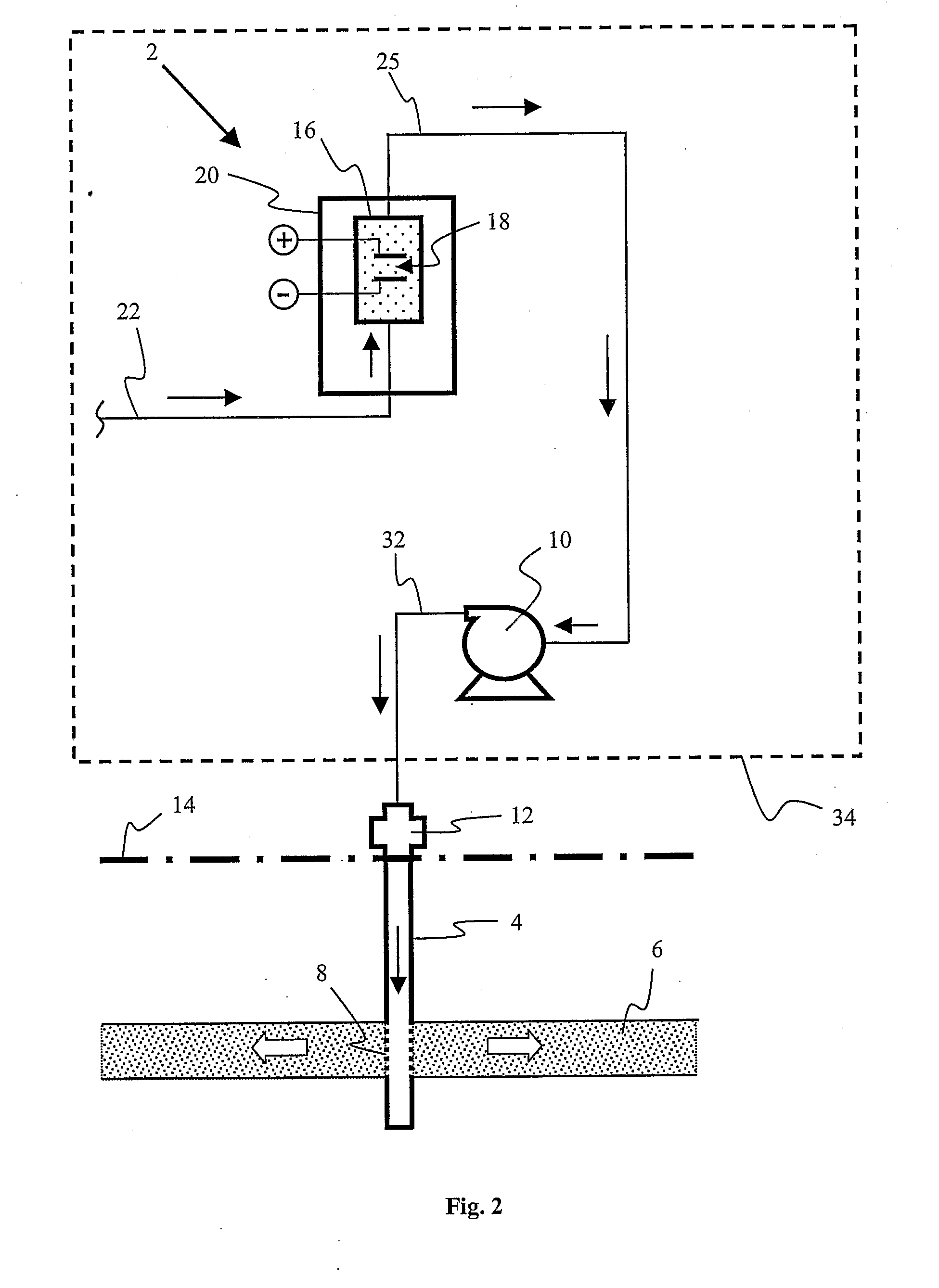Method and a device for destructing organic material in injection water and use of injection water for generation of destructive hydroxyl radicals
a technology of organic material and injection water, which is applied in the direction of water cleaning, specific water treatment objectives, and fluid removal. it can solve the problems of hydrogen sulphide gas being toxic, affecting the operation of equipment or plants, and having a very destructive effect on well-related equipment, etc., to reduce or prevent the biofouling effect of equipment or plants
- Summary
- Abstract
- Description
- Claims
- Application Information
AI Technical Summary
Benefits of technology
Problems solved by technology
Method used
Image
Examples
Embodiment Construction
OF EMBODIMENTS OF THE INVENTION
[0151]FIG. 1 shows a first example of an embodiment of a device 2 for destructing organic material in injection water for an injection well 4. The well 4 extends down into the subsurface and through a reservoir 6. Treated injection water is pumped into the reservoir via perforations 8 in the wall of the well, whereupon the water spreads out within the reservoir 6, as indicated with wide, white arrows in FIG. 1. Among other things, the device 2 comprises a high-pressure injection pump 10 connected to a wellhead 12 of the injection well 4, the pump of which is used to pump the injection water down into the well 4 and further into the reservoir 6. The wellhead 12 is placed at an interface 14 (depicted with a dash dot line in the figure), which may be located at the surface or under water, for example at a seabed.
[0152]The device 2 also comprises an electrochemical cell 16 provided upstream of the injection well 4 and its wellhead 12. The cell 16 is arrang...
PUM
 Login to View More
Login to View More Abstract
Description
Claims
Application Information
 Login to View More
Login to View More - R&D
- Intellectual Property
- Life Sciences
- Materials
- Tech Scout
- Unparalleled Data Quality
- Higher Quality Content
- 60% Fewer Hallucinations
Browse by: Latest US Patents, China's latest patents, Technical Efficacy Thesaurus, Application Domain, Technology Topic, Popular Technical Reports.
© 2025 PatSnap. All rights reserved.Legal|Privacy policy|Modern Slavery Act Transparency Statement|Sitemap|About US| Contact US: help@patsnap.com



